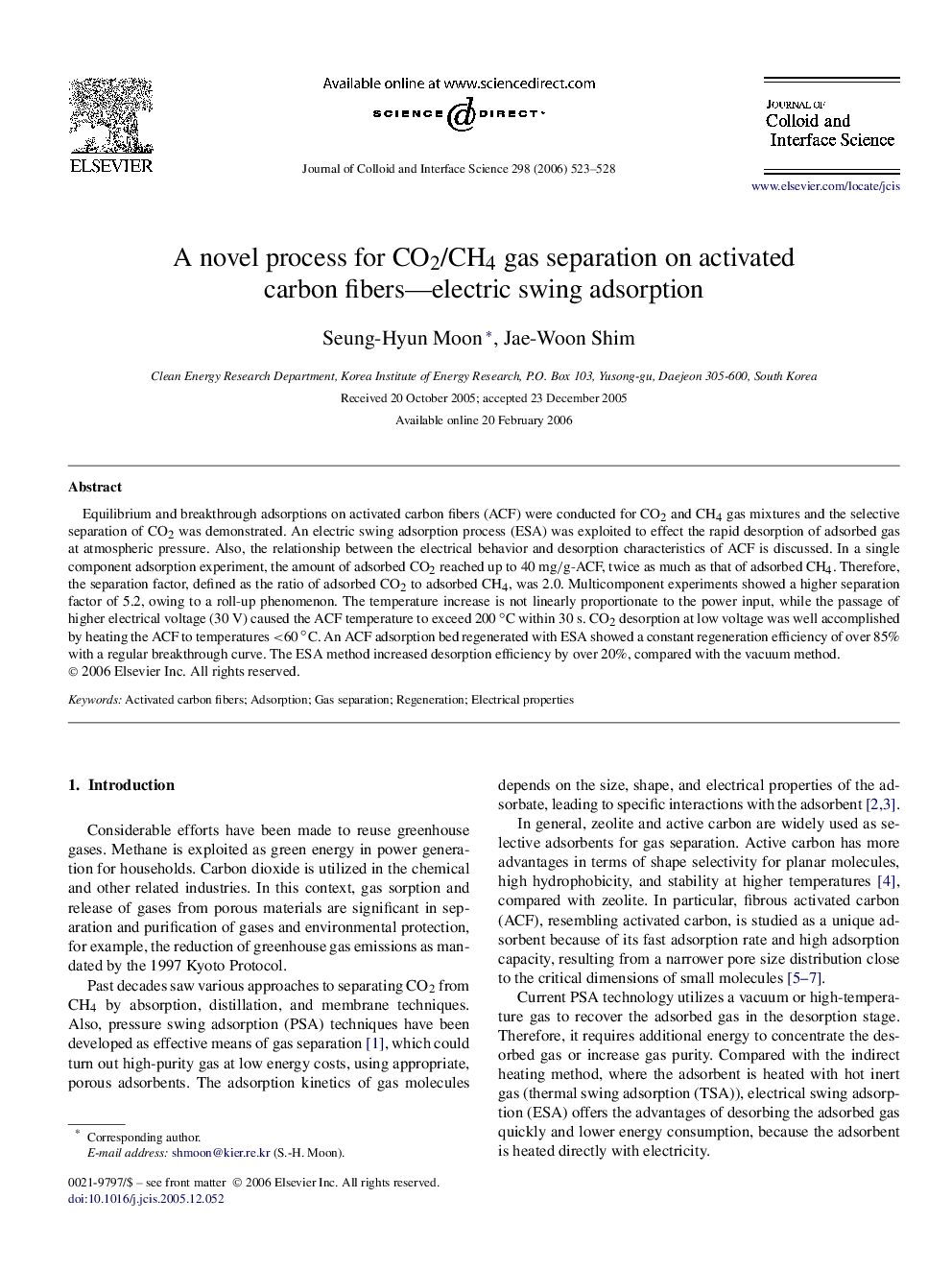| Article ID | Journal | Published Year | Pages | File Type |
|---|---|---|---|---|
| 613664 | Journal of Colloid and Interface Science | 2006 | 6 Pages |
Equilibrium and breakthrough adsorptions on activated carbon fibers (ACF) were conducted for CO2 and CH4 gas mixtures and the selective separation of CO2 was demonstrated. An electric swing adsorption process (ESA) was exploited to effect the rapid desorption of adsorbed gas at atmospheric pressure. Also, the relationship between the electrical behavior and desorption characteristics of ACF is discussed. In a single component adsorption experiment, the amount of adsorbed CO2 reached up to 40 mg/g-ACF, twice as much as that of adsorbed CH4. Therefore, the separation factor, defined as the ratio of adsorbed CO2 to adsorbed CH4, was 2.0. Multicomponent experiments showed a higher separation factor of 5.2, owing to a roll-up phenomenon. The temperature increase is not linearly proportionate to the power input, while the passage of higher electrical voltage (30 V) caused the ACF temperature to exceed 200 °C within 30 s. CO2 desorption at low voltage was well accomplished by heating the ACF to temperatures <60 °C. An ACF adsorption bed regenerated with ESA showed a constant regeneration efficiency of over 85% with a regular breakthrough curve. The ESA method increased desorption efficiency by over 20%, compared with the vacuum method.
Graphical abstractAn electric swing adsorption process (ESA) showed a higher separation factor of 5.2 and a constant regeneration efficiency over 85% with a regular breakthrough curve at atmospheric. The ESA method increased desorption efficiency by over 20%, compared with the vacuum method.Figure optionsDownload full-size imageDownload as PowerPoint slide
